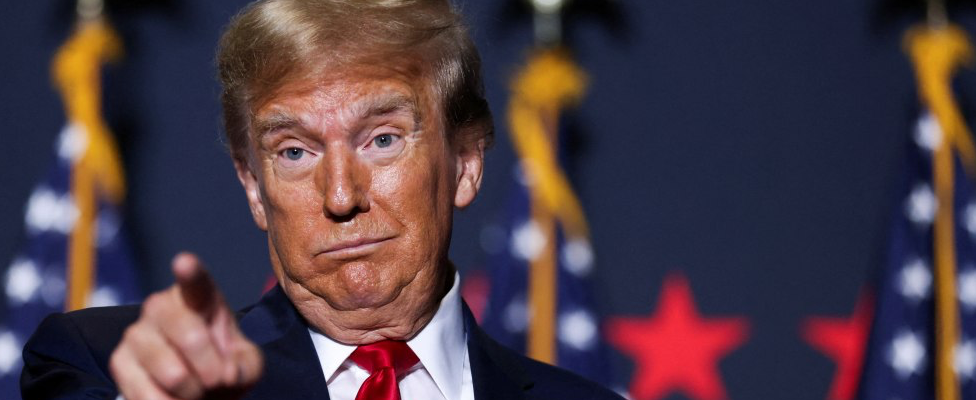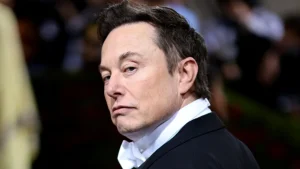What if Trump Wins Again?

With nearly six months to go until the U.S. election, given the significant impact of U.S. domestic and foreign policies on the global political and economic environment, and especially given Trump’s unconventional policies, governments around the world are contemplating this question: What will happen if Trump wins again? How should our country respond?
This article does not discuss the probability of his election but rather engages in scenario planning, assuming Trump wins and exploring his possible economic policy combinations and their impacts, including domestic and foreign aspects.
Possible Content of Trump’s Economic Policies:
1、Tax Cuts as the Core Economic Policy:
In Trump’s and the Republicans’ view, the key to the decent economic performance in the first three years of his previous term was the implementation of his first round of tax cuts, amounting to about $250 billion annually. These cuts included reductions in personal income taxes, providing the middle class with more cash for consumption, and reductions in corporate taxes, incentivizing American companies to repatriate overseas profits for reinvestment or dividends. However, due to losing the House majority in the 2018 midterms, his second round of tax cuts did not materialize. If he wins a second term, he will likely push for significant tax cuts again, targeting estate and personal income taxes.
Recently, Trump has suggested replacing all income taxes with tariffs. This involves domestic and international wealth redistribution. According to federal fiscal rules, any tax cuts the president suggests must be offset by other sources of funding at the president’s disposal. Thus, the premise of Trump’s tax-cutting proposal lies on his success in locating additional funding.
Trump’s previous solution to the fiscal deficit caused by his tax cuts was to increase tariffs, initially named the “Border Adjustment Tax,” which imposed an additional 10% tariff on the then $2.7 trillion of annual imports.
This policy of using external funds to offset domestic tax cuts embodies Trump’s “America First” fiscal strategy. However, then-Senate Majority Leader Mitch McConnell warned Trump in Spring 2017 that such tariffs would hurt lower-income Americans, who consume more imported goods, and could be politically damaging for Republicans in the 2018 midterms. Thus, Trump rebranded the tariffs as a defense against imports and trade deficits harming American jobs.
To major trade partners, Trump’s administration communicated a request to play along with a performance for American voters.
Trump’s broader strategy of increasing tariffs to fund tax cuts was detailed in academic papers of mine, based on indirect information from Trump’s family and verified through multiple channels. Unfortunately, understanding this logic requires both expertise in fiscal policy and international economics, and a departure from grand narratives of great power rivalry.
In a second term, Trump might again face the debt ceiling constraint. If he loses the House majority, the debt ceiling pressure could drive him to start new tariff wars, including against China and other trade partners like Europe, Japan, Mexico, and ASEAN, to secure more federal revenue. Recently, Trump has reiterated his intention to replace income taxes with tariffs, indicating a consistent strategy.
 Changes in the U.S. fiscal deficit (2000-2023)
Changes in the U.S. fiscal deficit (2000-2023)
 The ratio of U.S. national debt to GDP (1945-2024)
The ratio of U.S. national debt to GDP (1945-2024)
2、Monetary Policy in Trump’s Second Term
Trump will likely pursue significant interest rate cuts and balance sheet expansion. While the Federal Reserve is independent, Trump’s appointment of Powell and recent rumors suggest Trump might pressure Powell to resign if he doesn’t cooperate with rate cuts, replacing him with a more compliant candidate. The Fed is preparing for scenarios where Powell succumbs to White House pressure or resigns, leading to a shift toward looser monetary policy.
U.S. inflation has dropped from 9% to 3.3%, but it seems stuck above the 2% target. If Trump resumes a loosening cycle, combined with domestic tax cuts, increased tariffs, and immigration restrictions, inflation could surge, posing a challenge for the Fed.
The exact leverage Trump holds over Powell is unclear. In 2018, Powell resisted Trump’s calls for lower rates, but by the end of 2018, he became more compliant. The reasons remain unknown, but future memoirs might reveal the story.
Interest rate cuts could stimulate the economy, stock market, and real estate (Trump being a real estate mogul) and save significant debt interest costs, supporting Trump’s tax cut plans. As low-interest bonds mature after 2009, the federal government must issue new bonds to repay $35 trillion of national debt. With new bonds are issued at this interest rate of 5.5%, the interest on these bonds alone has surpassed US’s military expenditure in recent years. Lowering the average interest rate by one percentage point could save $350 billion annually, freeing up funds for other projects like the border wall.
 Data: Changes in U.S. national debt interest payments and their proportion of federal spending (2000-2023).
Data: Changes in U.S. national debt interest payments and their proportion of federal spending (2000-2023).
3、Abandoning Biden’s Green Subsidies in Favor of Traditional Energy:
Trump is likely to discard Biden’s support for green industries in favor of traditional energy, driven by Republican backers like the Koch brothers. His policies towards the chip industry, AI, and digital currencies remain to be seen but are expected to be relatively positive.
Other measures to balance the fiscal deficit could include reducing overseas commitments, forcing allies to contribute more, and significantly cutting support for the Ukraine war, potentially forcing Ukraine to cede eastern territories to Russia for peace. This serves both U.S. interests and Trump’s personal agenda.
If re-elected, Trump will aim to end the Ukraine war by 2025, likely negotiating a significant deal with Putin.
Trump might secure large quantities of cheap Russian oil, mirroring the immense profits seen by countries like India and Turkey from reselling Russian oil. While politically risky, Trump might persist in undertaking such deals at the temptation of tremendous wealth, showcasing his “art of the deal.”
Domestically, Trump would focus on completing the border wall and intensifying measures against illegal immigration. Welfare spending would be tightened.
With a second term, Trump’s experience and lack of future election constraints would enable him to more effectively counter bureaucratic resistance, reshaping U.S. political and economic trajectories away from neoliberalism towards isolationism and conservatism. He could potentially diminish the U.S.’s global financial empire role, reducing associated fiscal and military costs, and focusing inward.
Deteriorating U.S.-China relations might lead Trump to consider freezing or seizing Chinese assets in the U.S., using this as leverage for concessions from China.
Possible Impacts of Trump’s Policies:
1、Accelerated Move Towards Parallel Systems:
The world is moving towards “parallel systems【1】,” a concept I’ve been advocating for years. Though often viewed negatively, I maintain this outlook and suggest planning our development strategies and dual circulation pathways accordingly.
 Changes in the shares of U.S. imports from China, Mexico, Canada, and Japan.
Changes in the shares of U.S. imports from China, Mexico, Canada, and Japan.
As shown, China is no longer the largest source of U.S. imports, ranking fourth after the EU, Mexico, and Canada. Poor trade negotiation strategies with the U.S. under Trump could further reduce this share.
2、Dollar Index Likely to Enter a Downward Cycle:
The dollar index has been in a strong cycle since 2008. Compared to previous cycles in the early 1980s and late 1990s, this cycle has been characterized by a gradual but sustained rise, driven by the decline in European and Japanese industrial competitiveness. The recent tightening of U.S. monetary policy has attracted trillions of dollars into U.S. assets, boosting the dollar index. However, a decrease in U.S. interest rates could reverse this flow, leading to a weaker dollar.
Furthermore, if Trump sacrifices Ukraine’s sovereignty to push for a ceasefire or peace with Russia, European-Russian relations could improve, partially restoring energy and other trades, strengthening the euro and weakening the dollar index.
 Dollar index trends from 2000 to June 2024.
Dollar index trends from 2000 to June 2024.
3、Rising U.S. Inflation Rates:
Trump’s policies, including increased tariffs, tax cuts, and immigration restrictions, could drive U.S. inflation back into an upward trajectory. It will be challenging to reduce the inflation rate below 2% again. Tariffs and tax cuts tend to raise inflation, and forced rate cuts would depreciate the dollar, adding further inflationary pressure.
 Trends in U.S. inflation rates from 1970 to 2024.
Trends in U.S. inflation rates from 1970 to 2024.
【1】The term “parallel” here refers to the accelerating process of “decoupling” between the United States and China in various fields such as technology, trade, and capital since the summer of 2010. This increasing decisiveness has led to the gradual splitting of the previously unified global market system into two parallel and competing systems.



